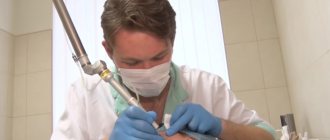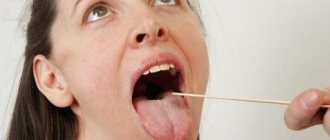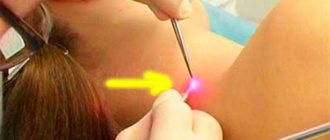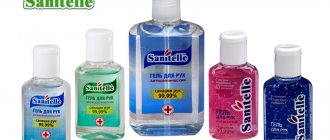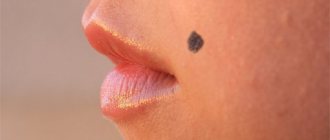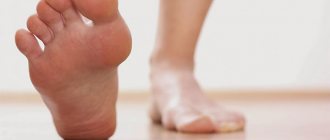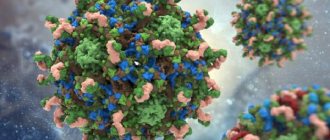A condition where a wart bleeds is a serious reason to fear for your own health. Although formations are classified as benign, violation of their integrity and bleeding can provoke tissue degeneration. It is important not only to know why a wart bleeds, but also what to do in such cases, how to help yourself and others. The information will be useful not only for patients who already have growths on various parts of the body, but also for their loved ones. The virus spreads quite easily in a humid, warm environment and is activated as soon as a person’s immunity weakens. With a high degree of probability, loved ones are also infected with the pathogen. Even if warts have not yet appeared, you should be aware of possible complications and measures to prevent them.
Reasons why warts bleed
Bleeding skin tags are quite common. Once formed on the body, warts can cause itching and pain. And if they are in places of constant contact with clothing, they are often injured. Then blood begins to flow from the wart itself, or from the wound that forms.
Most often, a wart bleeds for several reasons:
- mechanical damage;
- after removal;
- degeneration of benign cells into malignant ones;
- attempting to remove the growth yourself;
- prolonged exposure to water, which leads to softening of the wart.
Mechanical damage
A person can damage a papilloma either deliberately or completely accidentally. For example, during sleep you can scratch it off or rub it with tight-fitting clothing.
And some people try to pick out a wart, thinking that this way they will save their time and money. But such thoughts, as a rule, do not lead to the desired outcome.
Children especially often suffer from bleeding problems from papillomas. Because of their age, they cannot understand the full danger of what is happening, and simply scratch off the warts if they itch.
Degeneration into cancer is quite rare. However, if, along with bleeding, a change in color, shape and structure occurs, or pain occurs, you should immediately contact an experienced specialist.
It is better that in this case, not only a dermatologist, but also an oncologist makes the diagnosis. Detecting melanoma (skin cancer) at an early stage can greatly facilitate the treatment process and prevent dangerous consequences.
Most people, before turning to a specialist, attempt to get rid of the annoying keratinized blister on their own. And, very often, this leads to injury to the formation, followed by bleeding, inflammation and suppuration.
It is important to remember that warts require responsible treatment. Therefore, before attempting such procedures at home, you should consult a doctor.
During water procedures, all skin, and in particular warts, are steamed. Consequently, the formations become soft and come off easily. To prevent this situation, you should avoid rubbing the growth with a washcloth or towel.
After removal
After removal, a wound remains on the skin . By providing proper care, you can reduce the likelihood of scar formation after the procedure and speed up the healing process. After removal of the papilloma, the patient is given a list of recommendations that include certain restrictions.
These include the following:
- The crust that has formed at the wound site should under no circumstances be peeled off.
- It is prohibited to apply any cosmetics to the damaged area.
- It is recommended to protect the wound from direct exposure to sunlight.
- Air promotes faster healing. It is advisable to remove the bandage the next day after the removal procedure.
- It is necessary to limit direct contact with other people.
- Avoid getting water on the wound for several days.
After medical intervention, a bandage is applied to the location of the wart. In the first hours after removal of the formation, the doctor does not recommend removing it. An open wound can become infected .
It is also possible that a small amount of
When to see a doctor
It is necessary to consult a doctor when the first growths appear. This will allow treatment to begin in time, before the formations are single and have not spread.
Dermatologists and oncologists treat such formations. In case of specific localization (around the anus), it is recommended to consult a proctologist. In some cases, papillomas can appear in the urethra, then a urologist will deal with the treatment.
A visit to the doctor is mandatory if suspicious symptoms appear:
- rapid growth of a wart, an increase in size in a short period of time of a mole that has not changed at all for a long time;
- the appearance of erosions, non-healing ulcers;
- discharge of ichor, blood, pus;
- changing the usual form;
- color change (becomes black);
- inflammation.
These signs are conditional and individual in each case. Malignization of such growths occurs rarely (we are talking about non-oncogenic strains). If oncology is suspected, a histological examination is performed in the hospital.
Necessary actions for wart bleeding
When, for any reason, blood comes from a wart, this is a reason to immediately consult a doctor. But what to do before that?
- First, you need to stop the bleeding. I do this using hydrogen peroxide, which is probably in every home medicine cabinet.
- It is important that before starting to treat a wound, a person disinfects his hands and the objects used. Using a cotton swab, gently wipe the bleeding wound with the solution.
- You can use weak solutions of Furacilin or potassium permanganate. The use of iodine or brilliant green is undesirable. However, they can be used.
Just under no circumstances should you fill the wound itself with these solutions.
You should use a cotton swab to treat the skin around the wound. This action will help prevent bacterial infection from entering the blood.
After disinfection, you should seal it with a special antibacterial patch or sterile bandage, which is changed as it gets wet.
If the fallen papilloma persists, it should be shown to a doctor. There is a possibility that the growth will be needed for subsequent histological examination.
If the bleeding does not stop within 10 minutes, it is unacceptable to postpone a visit to the doctor. Since stopping it, at this stage, is the main task.
If, in addition to bleeding, there are symptoms of deterioration in health (dizziness, nausea, loss of consciousness), the question of calling an ambulance arises.
After the examination, the doctor will decide on the need to remove necrotic tissue, additional laboratory tests and procedures, and tell the patient what to do after the wound has healed.
Radical removal
The most reliable way to combat a tumor is removal in a specialized medical institution under the supervision of qualified specialists. This method of treatment is the fastest and most effective.
The attending physician will definitely prescribe a comprehensive course of treatment for neoplasms. It includes:
- Direct removal of growths;
- Taking antiviral drugs;
- Preventive actions.
Modern medical centers offer to remove the growth using:
- Laser destruction;
- Radio wave therapy;
- Cryodestruction;
- Electrocoagulation;
- Surgical operation.
All these methods are highly effective, but cannot guarantee that growths will not reappear. This is due to the fact that today there is no cure for papillomavirus. It remains in the human body and waits for the right moment for “active action.”
Therefore, complex therapy for neoplasms includes taking antiviral drugs (Acyclovir, Viferon) and immunostimulants (Interferon, Giferon, Imiquimod).
The main preventive measures are:
- Balanced diet;
- Taking vitamins;
- Elimination of physical and emotional stress;
- Personal hygiene;
- Healthy lifestyle.
All this will help keep you healthy and protect your loved ones from infection.
Possible complications
Bleeding from a wart is not only unpleasant. It can lead to a number of complications, sometimes very serious.
First, the bleeding itself is dangerous. If the bleeding is not stopped, there is a possibility that it will continue to flow for a long time. This can affect a person's general condition.
In this case, dizziness, darkening of the eyes, and noise in the ears are observed, which ultimately leads to loss of consciousness of the victim. Possible decrease in blood pressure. But the most important complication in this situation is uncontrolled blood loss.
What to do in this case? Contact your doctor immediately. And if this is not possible, call an ambulance.
Secondly, an open wound is a “wide gate” for various infections to enter. If you do not pay due attention to the problem (getting into the wound with dirty hands, using unsterile objects), there is a possibility of introducing dangerous bacteria. As a result, inflammation of the affected area occurs. This is followed by suppuration and, in some cases, tissue necrosis.
The next possible scenario is the spread of viral infection cells. A wart has infected cells that are easily spread throughout the body when the growth is injured. Thus, multiple growth of papillomas occurs throughout the skin.
What to do in case of complications, such as a blood trail? Seek help from a specialist immediately. Only an experienced doctor can make an adequate decision regarding immediate assistance.
Treatment options at home
It’s worth noting right away that this is the most risky and unwise decision you can make. If you pull out the remnants of a wart or start treating its remaining fragment, you can use some drugs from the pharmacy for such purposes.
The same “Kolomak” or “Ferezol” will make it possible to remove a damaged wart, but you should be aware that they all practically burn out the cells of the neoplasm, and with the slightest damage to the growth, this can lead to severe burns, the formation of wounds, infection and much more.
Some advise treating areas with warts with celandine, even if it is a torn wart, or using various recipes from traditional medicine. Be that as it may, there is no point in talking much about this, since we are talking about the potential development of cancer, and there is no point in thinking about any self-medication here.
Neither pharmaceutical products, nor folk recipes, nor, especially, self-removal of warts, will do anything good unless you first consult a doctor.
Prevention and care of skin lesions
To prevent bleeding from a wart and possible complications of this phenomenon, it is necessary to follow certain recommendations for caring for the formations.
- You should wear loose clothing and shoes that do not compress the growth.
- You need to monitor the length of your nails to prevent scratching the wart.
- If the papilloma is located in a place that is often exposed, it is better to cover it with a band-aid.
- Do not try to pick out, cut or burn out the papilloma yourself.
- When taking a bath, shower or visiting a sauna, it is better to seal the formation.
- Gently and gently wipe the wart, avoiding rubbing with a washcloth, towel or bathing brush.
To prevent the spread of infection, you should wash your hands thoroughly after touching the formations. Do not allow others to touch the bloody growth with unprotected, dirty hands. There is a risk of introducing bacteria into the wound and infecting a healthy person.
If a person follows all the recommendations and takes care of the education with care, the danger of injuring him will be reduced to zero.
Of course, the surest decision when a wart forms is to visit a doctor. Only an experienced specialist can recommend what a person should do - remove, treat or ignore the external symptom of the papilloma virus.
The expert's opinion plays an important role in this case. After all, timely treatment of tumors can prevent the development of complications and possible negative consequences.
Ways to protect a wart from mechanical damage
The most effective way to protect growths is to remove them from the surface of the skin as quickly as possible. However, if for some reason a person cannot get rid of such formations on the surface of the skin, then in this case it is necessary to take certain precautions that will prevent their mechanical damage.
Men with warts on their faces should take special care when shaving. After all, it is during shaving that these growths are often subject to injury and mechanical stress.
If a person’s warts are located in the area of the arms, legs or neck, then in this case they need to be covered with a patch. This need is due to the fact that the surface of the skin in these places is often rubbed by clothing.
What are there
Growths that appear on the skin due to infection with papillomavirus can vary in shape and structure.
Much depends on the specific strain that enters the body. And there are about a hundred of them.
Basically, warts can be classified as follows:
- simple (ordinary) - a dense, sometimes keratinized nodule with a diameter of up to 0.5 cm, which appears on the skin of the hands and fingers; in a child it can also be found on the knees;
- flat - a dense spot with a flat, smooth surface, sometimes irregular in shape, protrudes slightly above the skin, often becomes inflamed and itchy, such growths usually appear in children and adolescents;
- plantar (spike) - a plaque on the foot that is off-white or yellowish in color with a keratinized uneven surface that sometimes cracks; as the wart grows, the pain when walking increases because it grows deep inside;
- filiform - a small growth (from 1 mm), usually on a stalk, papillary in shape, soft but elastic, which usually occurs on thin skin around the eyes, on the neck, under the arms, in the fold under the breast or in the groin;
- genital warts are a type of warts that form on the mucous membrane of the genital organs, mouth, larynx, nose, have several peaks of unequal height, are elastic, and are prone to fusion with newly formed growths.
The type of wart is easy to determine from the photo.
They do not have cavities inside, they are formed directly from epidermal cells, therefore, when pressed, they do not move from their place, representing a single whole with the skin or mucous membrane.
source
So what to do
If a wart bleeds, a dermatologist will tell you what to do. If necessary, he will involve other highly specialized specialists in treatment or refer you to see them.
In any case, the specialist will recommend removal of the wart. Fortunately, there are a lot of ways to carry out such a procedure and they are all safe, practically painless and do not require hospitalization. Immediately after the procedure, the patient can go home.
Therapy consists of two main areas.
The first of them is removal, which is carried out in the following ways:
- exposure to liquid nitrogen or other refrigerants is called cryodestruction;
- removal using a thin laser beam is called laser destruction;
- destruction of formation by electric currents is called electrocoagulation;
- removal using radio waves is the most innovative method;
- For large tumors, traditional surgery is used.
But removing the growth is an incomplete solution to the problem. After all, the virus inside a person is still “alive and well.” If antiviral therapy is not carried out, relapses may occur.
But how to stop the bleeding if the wart is still injured or was removed at home yourself? After all, there will be bleeding in any case - there is a network of capillaries there.
You must first treat the area with hydrogen peroxide - the bleeding will stop in a minute maximum. Then disinfect the surface with Chlorhexidine, Miramistin or another colorless preparation with such a spectrum of action. It is better not to use coloring compounds so that it is possible to monitor the spread of the process and the possible addition of infection. Place the removed particle in a sterile glass container and fill it with saline solution. It will be needed for histological examination, which is the norm in such cases.
And then we go to the hospital for specialist help. If you want to be healthy and sleep peacefully, this is an indispensable condition.

